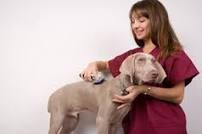SHEDDING DOG

The odds are that unless you own a hypoallergenic dog (this is a dog with hair instead of fur), the chances are that your dog will shed in varying degrees.
This is part and parcel of owning a dog, however there are a few simple steps that you can take which will reduce the amount of fur around the home and on your clothes and these are:-
- Daily brushing – if you just spend a few minutes a day this really is the best way to reduce the amount of hair and much better than having a weekly brush. This helps even if you take your dog to a professional groomer on a regular basis.
- Brush outside to avoid hairs inside. If this is not possible, have the vacuum close by and vacuum around the area where you brushed your dog.
- Use the brush that best suits your dogs coat. If you are not sure, do ask your vet or a good quality pet shop and based on your dogs breed they will tell you which option is the best for your dog – this can really make a difference especially in the heavy shedding dogs.
- Give your dog a bath on a regular basis and if possible allow your dog to dry and give a good brush when dry outside. Remember to use a product that is suited to dogs – not human or cat products.
- Bald spots or thinning of the coat – can be thinning only in certain areas
- Excessive scratching
- Redness, bumps, lumps etc
- Any open sores
- Coat texture may have changed
- Dog is licking itself more than usual, especially in the same places
- Excessive shedding compared to normal
